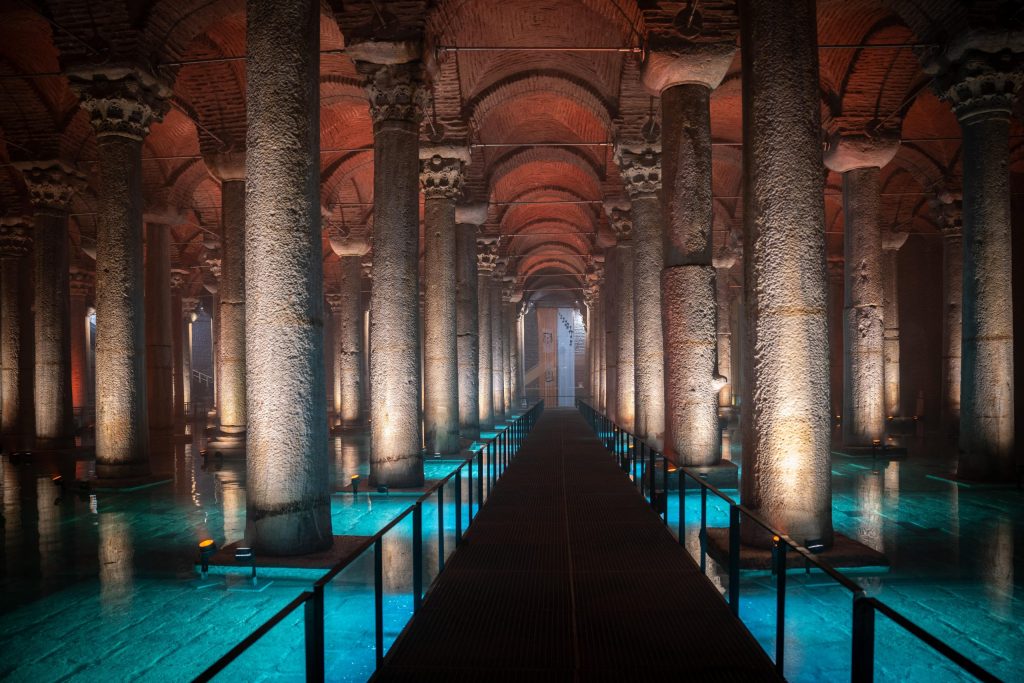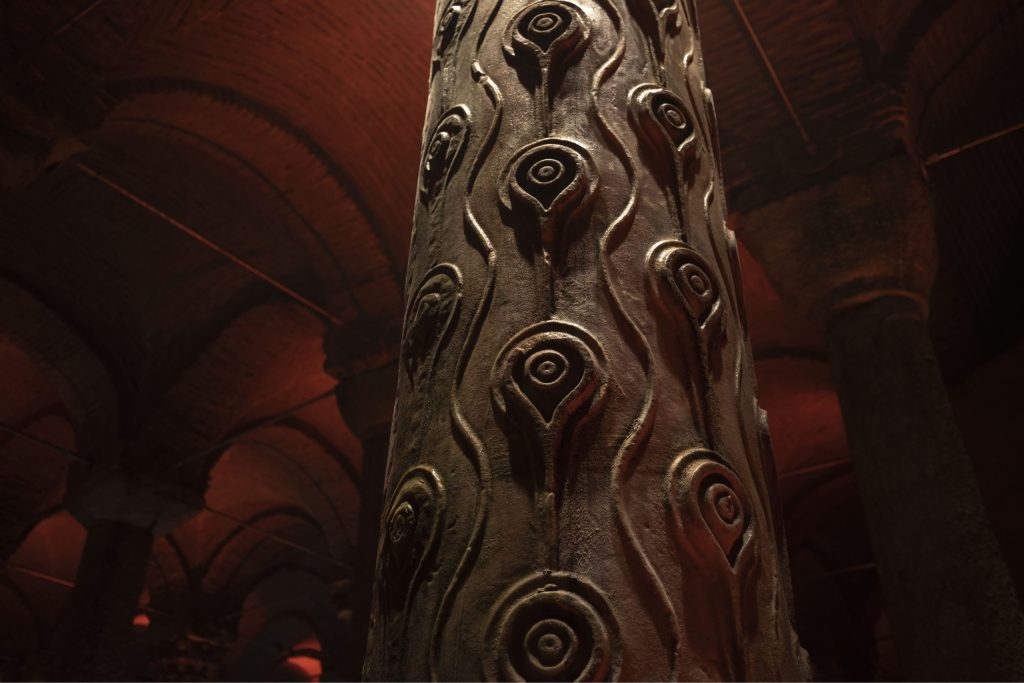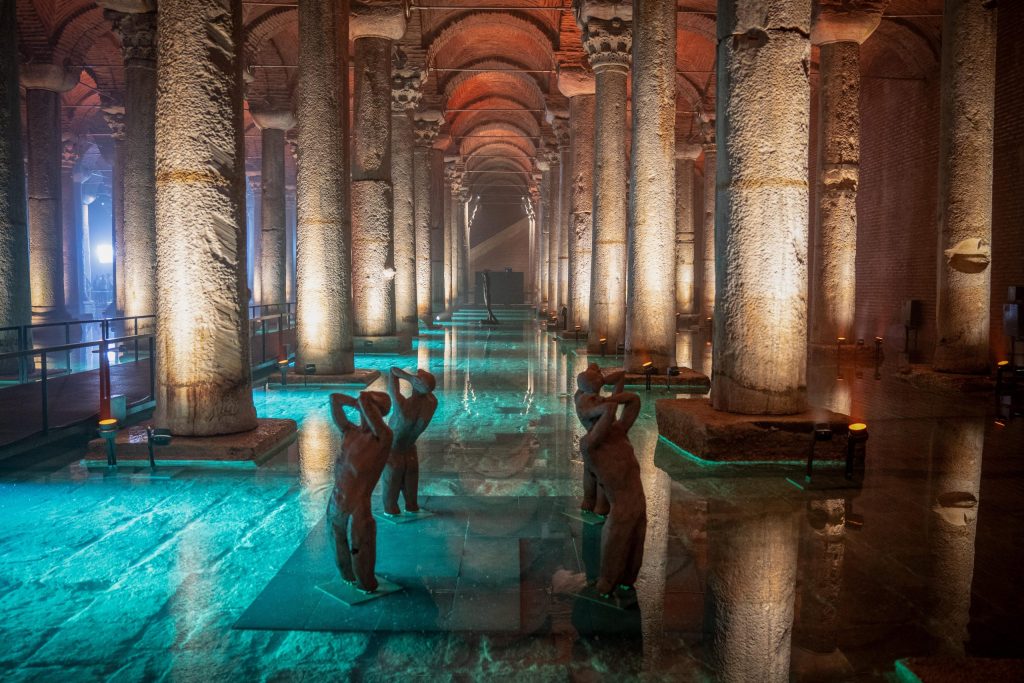Address
Binbirdirek, Dizdariye Çeşmesi Sk. No:49, 34122 Fatih
Phone:
+90 212 458 11 18
Mobile:
+90 533 404 85 15
Address
Binbirdirek, Dizdariye Çeşmesi Sk. No:49, 34122 Fatih
Phone:
+90 212 458 11 18
Mobile:
+90 533 404 85 15

The Basilica Cistern (Βασιλική Κινστέρνα) is the largest underground cistern of Byzantine Constantinople. It was built under the Basilica located west of Hagia Sophia. Also known by its Turkish name Yerebatan Sarayı (“Sunken Palace”), it is one of the major tourist attractions of modern Istanbul. The Basilica Cistern, along with churches like Hagia Sophia, gives an impression of the massive construction projects once undertaken by Justinian I (527-565).
The Basilica Cistern is the only remaining structure of an important complex of buildings in the vicinity during Late Antique Constantinople. The cistern gets its name from the Basilica, often known as the Basilica Stoa or the Basilica of Illus, once located above it. Nothing is known about the site before Byzantium was inaugurated as Constantine’s capital. It was located west of the Augustaion and Hagia Sophia, and northwest of the Milion, the milestone at the beginning of the Mese. The Basilica, where Constantinople’s law courts were situated, was erected around the late 4th or early 5th century, with a large courtyard surrounded by four porticoes. Buildings attached to the Basilica included, the Library of Constantinople (said to contain 120,000 books in the 5th century) and the Octagon (the seat of a university where law courses were given and cases tried). Various stalls, including book sellers, were also located in the Basilica. The Basilica burned down in 476, after which it was rebuilt probably by Illus.
Beneath the bustling streets of Istanbul, Turkey, lies the Basilica Cistern, a 6th-century marvel that was once used for storing water for the city. This ancient underground reservoir, built by the Byzantine Emperor Justinian I, boasts 336 columns and haunting Medusa heads. Now a museum and a popular tourist attraction, the Basilica Cistern offers an eerie yet beautiful escape into Byzantine history.
The most notable examples of reused materials are the two columns decorated with Gorgon heads and the so-called “peacock-eyed” or “tear-drop” column. A similar Gorgon head, now at the Istanbul Archaeological Museums, was found at the Forum of Constantine, which suggests the two Gorgon heads of the Basilica Cistern might also originally decorated the Forum of Constantine. The “peacock-eyed” column, which is similar to column fragments from the Forum of Theodosius, resembles the artistic convention of the Club of Hercules, as seen in the famous Farnese Hercules, which depicts Hercules resting on his club. This would mean that the column is decorated with knots of a tree, rather than peacock eyes or tear-drops. While the Gorgon head in particular have often been the source of speculation, it is unclear if the reused material had any particular significance.


